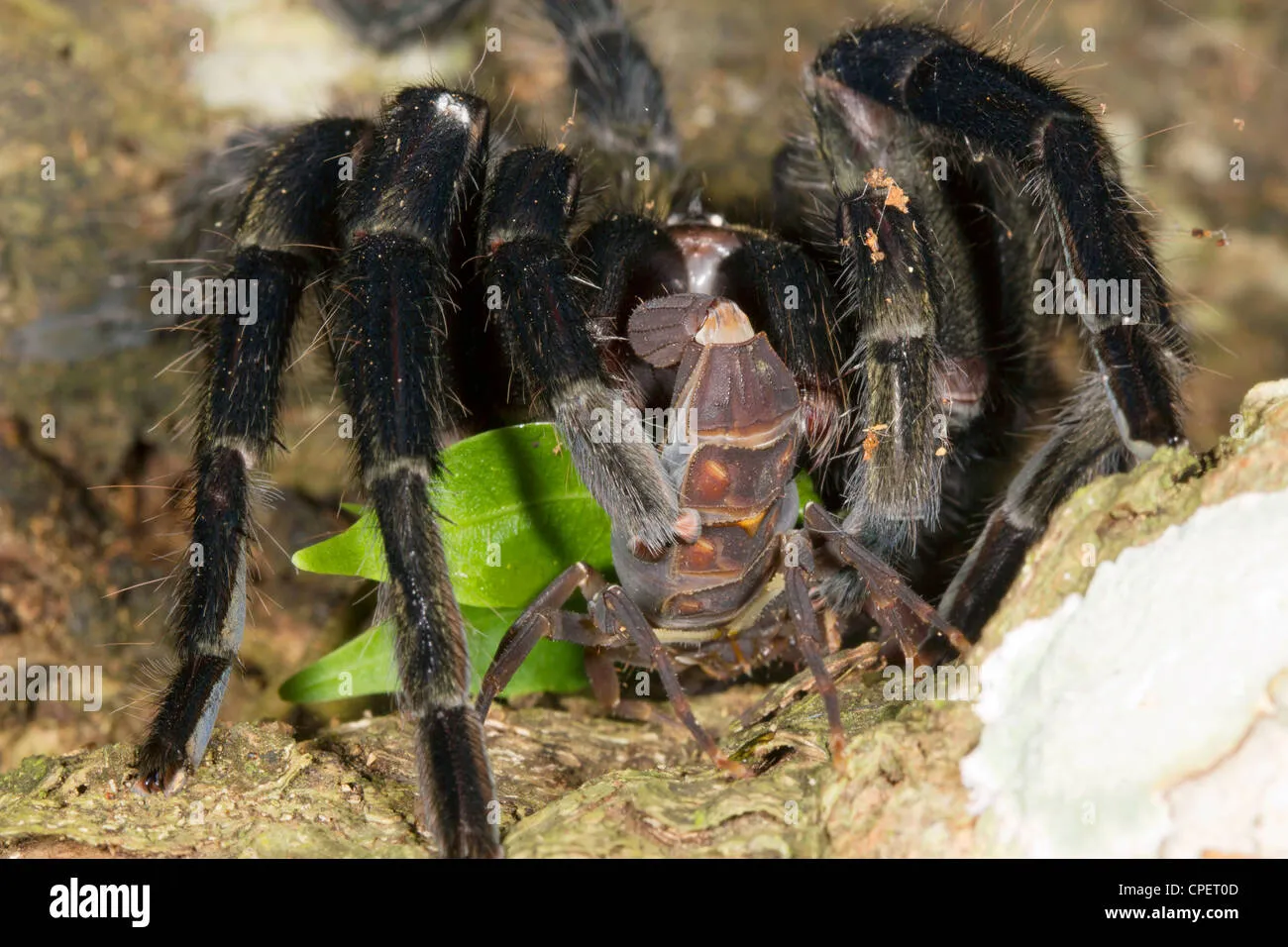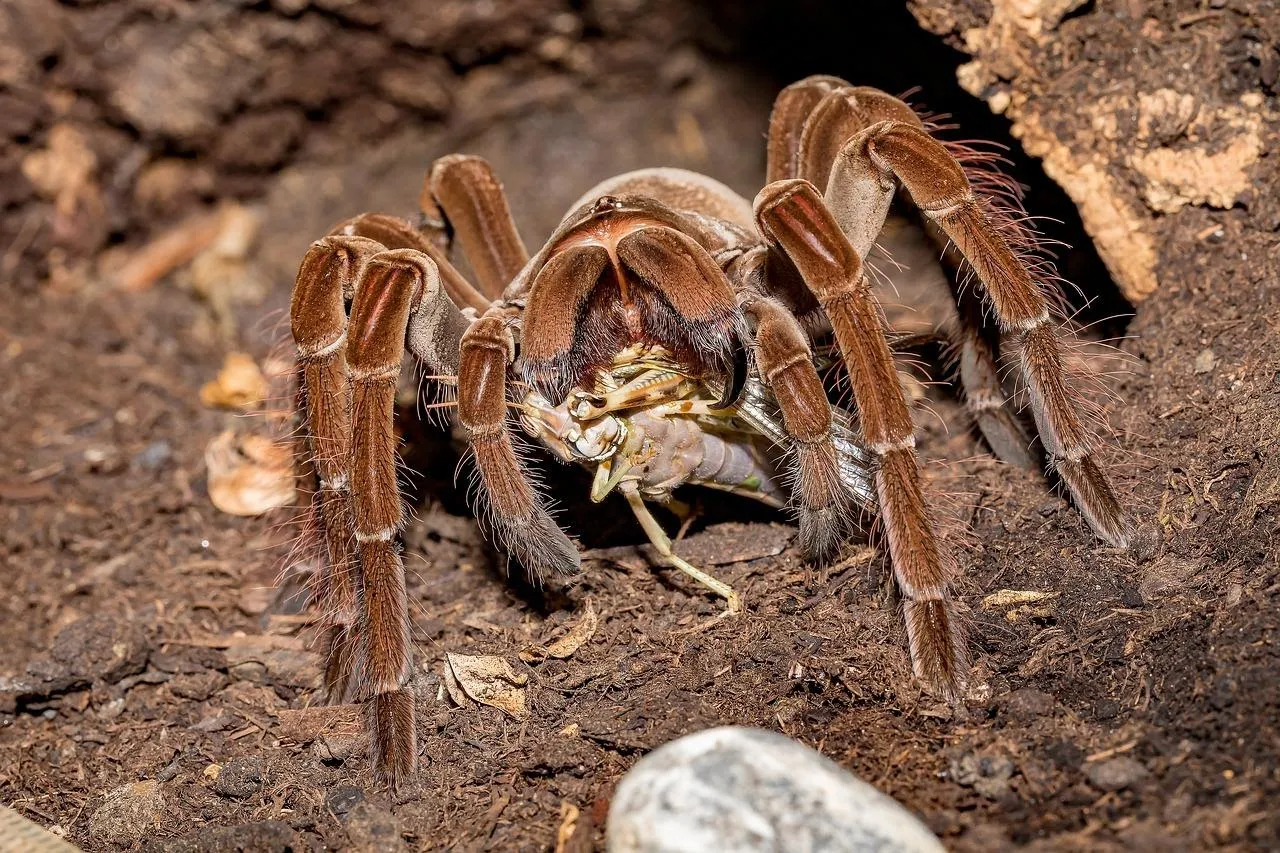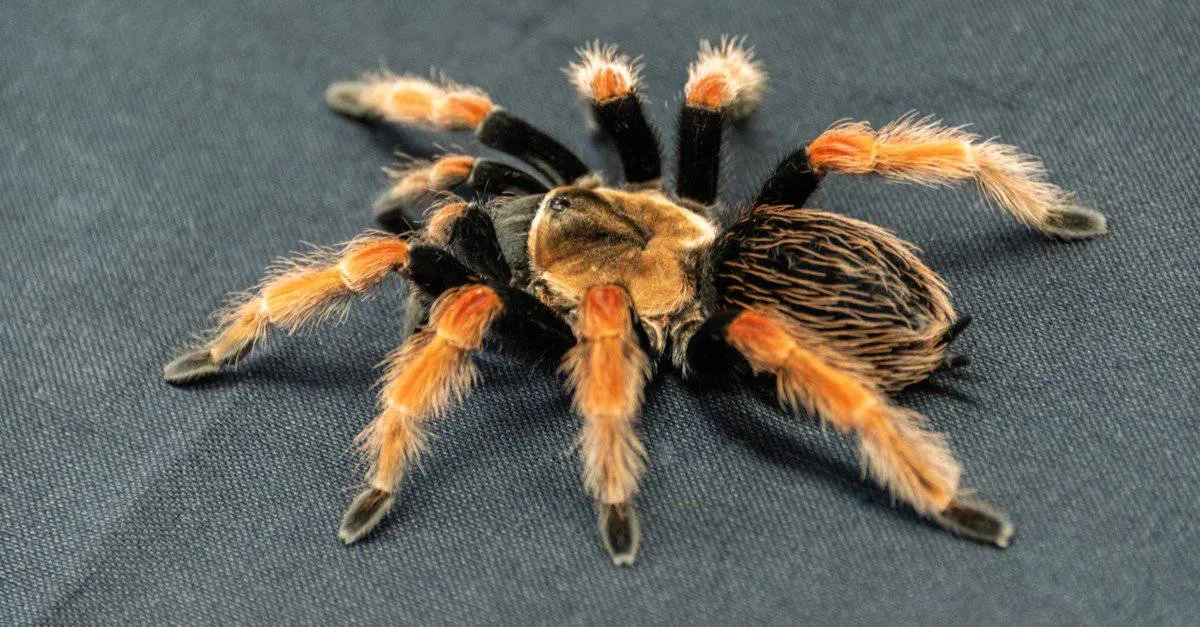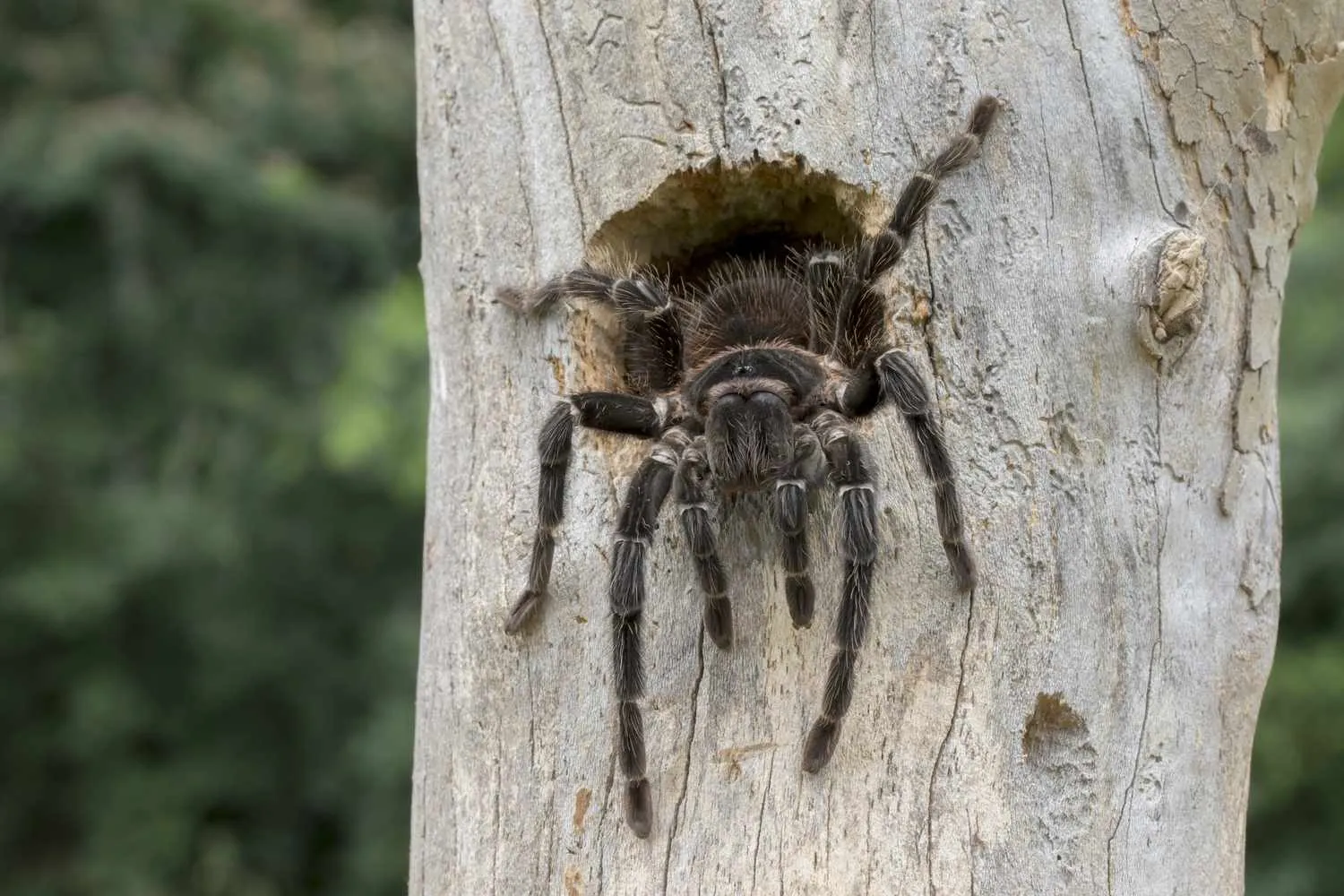What Do Tarantulas Eat?
Understanding what tarantulas eat is crucial for their health and well-being in captivity. These fascinating creatures are primarily carnivores, meaning their diet consists mainly of animal protein. In the wild, they are opportunistic hunters, feasting on whatever they can catch, from insects to small vertebrates. As pet owners, we must replicate their natural diet as closely as possible to ensure they thrive. This involves providing a balanced and varied diet, ensuring they get all the necessary nutrients to stay healthy and active. The choice of food items, the frequency of feeding, and the handling of food all play a vital role in providing optimal care for your tarantula.
The Natural Diet of Tarantulas
In their natural habitat, tarantulas have a diverse diet, determined by their environment and the availability of prey. This typically includes insects, such as crickets, grasshoppers, beetles, and moths. They also consume other arthropods like spiders. Larger tarantulas may occasionally prey on small vertebrates, including small lizards, frogs, and even baby birds. The diet of a wild tarantula depends greatly on its size, species, and the resources available in its particular ecosystem. Learning about their natural feeding habits helps us better understand their needs in a captive environment and tailor their diet for optimal health.
Insects as Primary Food Source

Insects form the cornerstone of a tarantula’s diet, making them the most readily available and suitable food source. The exoskeleton of insects provides essential chitin, which is important for tarantula’s growth and molting. Many types of insects are suitable food, but crickets, mealworms, and roaches are the most popular choices because they are easy to obtain, and generally nutritious. The nutritional value of insects can vary significantly based on their species and what they consume. It is crucial to feed your insects a high-quality diet, so your tarantula receives the best possible nutrition through its prey.
Feeding Frequency for Pet Tarantulas
The frequency of feeding depends on several factors, including the age and size of your tarantula. Spiderlings (juvenile tarantulas) require more frequent feeding than adults, as they are constantly growing and molting. Younger tarantulas can be fed every other day or every day, while adults can be fed once or twice a week. It’s essential to observe your tarantula and adjust the feeding schedule as needed. Overfeeding can lead to health problems, while underfeeding can result in slower growth or even health issues. Observing your tarantula’s behavior and appearance provides clues to adjust the feeding schedule.
Factors Influencing Feeding Schedules
Several factors influence the feeding schedule of your pet tarantula. Temperature plays a significant role; warmer temperatures generally increase their metabolism, which may require more frequent feeding. The species of the tarantula also matters, as some species have different metabolic rates and feeding preferences. Another critical factor is the pre-molt phase. Tarantulas often stop eating a few weeks or even months before molting. It’s essential not to force-feed them during this period, as it can stress them. Always monitor your tarantula’s behavior and body condition to determine the appropriate feeding schedule. A plump abdomen generally indicates a well-fed tarantula, while a thin abdomen suggests the need to feed more often.
How Much to Feed Your Tarantula

The amount of food depends on the size of the tarantula and the size of the prey. Generally, a good rule of thumb is to offer prey items that are no larger than the tarantula’s body. For spiderlings, a few small crickets or mealworms are adequate. For adults, you can offer one or two larger prey items per feeding. It’s better to feed smaller amounts more frequently than to offer too much food at once, especially for juvenile tarantulas. Always remove any uneaten prey within 24 hours to prevent stressing your tarantula and to avoid potential injuries from the prey, especially when it molts. Adjust the amount based on how readily your tarantula consumes the food and its overall body condition.
Top 5 Food Options for Your Tarantula
Providing a varied diet ensures that your tarantula receives a wide range of nutrients. While some food items can be used more regularly, it’s good to vary the meals to provide a more balanced diet. Variety not only improves nutritional intake, but it also keeps feeding time interesting. Here are the top 5 food options for your tarantula, which are readily available and relatively easy to manage:
Crickets as a Staple Food
Crickets are a popular staple food because they are easily accessible and relatively inexpensive. They provide a good source of protein and are readily accepted by most tarantulas. Before feeding crickets to your tarantula, it’s essential to gut-load them with a nutritious diet, such as commercial cricket food or fresh vegetables. This practice significantly increases the nutritional value of the crickets and benefits the tarantula. The size of the crickets should be appropriate for the size of your tarantula. Remove uneaten crickets after 24 hours to avoid stressing your pet and preventing potential injury.
Mealworms and Their Nutritional Value

Mealworms are another common food option for tarantulas. They have a higher fat content compared to crickets. While beneficial in moderation, overfeeding mealworms can lead to an overweight tarantula. For smaller tarantulas or spiderlings, mealworms are an excellent food source due to their convenient size. Mealworms are easy to keep and breed, making them a convenient option for tarantula owners. When feeding mealworms, ensure they are from a reputable source and are healthy. As with any food, gut-loading the mealworms with nutritious food enhances their value to your pet.
Roaches and Their Benefits
Roaches, such as dubia roaches, are a highly nutritious food source and are becoming increasingly popular among tarantula keepers. They are packed with protein and relatively low in fat, making them a healthier option than mealworms. Roaches are also less likely to burrow than crickets or mealworms, which minimizes the risk of them hiding and stressing the tarantula. Dubia roaches are also easy to breed, which makes them a sustainable food source. Offering roaches provides a good balance of nutrients and contributes to overall health. Roaches have a longer lifespan than crickets, meaning they remain active for more extended periods, which allows for extended feeding time.
Other Acceptable Food Items
In addition to crickets, mealworms, and roaches, other food items are suitable for your tarantula, but they should be offered in moderation. These include grasshoppers, super worms, and even small vertebrates like pinky mice (for larger tarantula species). Waxworms are a high-fat treat and should only be offered sparingly. It is crucial to ensure that any insect you feed your tarantula is free of pesticides and parasites. Always research the nutritional value of alternative food items before offering them. Variety is critical in ensuring your tarantula receives a well-rounded diet, keeping them healthy and interested in their meals.
Pre-killed vs. Live Prey

Whether to feed your tarantula live or pre-killed prey is a matter of debate among keepers. Live prey allows tarantulas to engage in their natural hunting behavior, providing mental stimulation. However, there are risks. Live prey can injure a tarantula during a molt or if the tarantula is not interested in eating immediately. Pre-killed prey eliminates these risks, making it a safer option. Many tarantulas will readily accept pre-killed prey, especially if it is presented properly with tongs. If you choose to feed live prey, observe your tarantula closely and remove uneaten prey promptly.
Handling Food and Safety Precautions
Handling food requires several precautions to ensure the safety of both the tarantula and the keeper. Always use tongs or tweezers to offer food to avoid being bitten by the tarantula or the prey. Wash your hands thoroughly before and after handling the prey and the tarantula’s enclosure. Be aware of any potential health risks that the prey may carry, such as parasites or diseases. When cleaning the enclosure, remove any uneaten food promptly, as it can attract mites, other pests, and bacteria. By taking these precautions, you can help maintain a healthy and safe environment for your pet.
Identifying Signs of Overfeeding
Overfeeding can lead to various health issues. One of the most obvious signs is a plump abdomen, significantly larger than the cephalothorax (the front part of the body). Overfeeding can also stress the tarantula, leading to lethargy and a reduced appetite. If you notice these signs, reduce the feeding frequency or the amount of food offered. Always monitor your tarantula’s behavior and appearance to adjust its diet accordingly. Overfeeding can also make it difficult for the tarantula to molt, resulting in problems during the process. Regularly assess your tarantula’s condition to determine whether to adjust the feeding regime.
Recognizing Underfeeding and Starvation

Underfeeding is equally detrimental. Signs of underfeeding include a thin abdomen, indicating that the tarantula is not getting enough nutrients. A tarantula that is consistently underfed may appear lethargic and less active than usual. It might also refuse food, even when offered. In severe cases, underfeeding can lead to health issues and even death. If you suspect your tarantula is underfed, gradually increase the feeding frequency and the size of the prey. Regular monitoring of the tarantula’s overall health and behavior is essential to ensure it gets enough to eat to thrive.
Water and Hydration Needs
Water is as essential to a tarantula’s health as its diet. Tarantulas need a constant supply of fresh water to stay hydrated and maintain their bodily functions. Dehydration can lead to serious health problems, so ensuring access to water is crucial. Providing a shallow water dish is the most common method. It allows the tarantula to drink safely without the risk of drowning. Regular monitoring and cleaning of the water dish is necessary to maintain cleanliness and prevent any potential contamination.
Providing Fresh Water
Provide a shallow water dish with clean, fresh water at all times. Use a dish that is shallow enough to prevent the tarantula from drowning. Ceramic dishes or bottle caps are good options. Change the water regularly, ideally every day or every other day, to keep it fresh and prevent the buildup of bacteria. Check the water dish daily to ensure it is full and clean. In addition to the water dish, it’s good practice to mist the enclosure lightly to provide additional humidity, particularly during molting. Use distilled or dechlorinated water to avoid any harmful chemicals.
Humidity and Its Impact on Feeding
Humidity plays a significant role in tarantula health, including their feeding habits. Low humidity can lead to dehydration and can negatively impact their appetite. Humidity levels vary depending on the species, but it’s generally recommended to maintain a moderate humidity level. Proper humidity assists with the molting process. If your tarantula is having difficulty molting, it could be related to inadequate humidity. Monitor humidity levels with a hygrometer. Adjust humidity levels by misting the enclosure, adding damp substrate, or improving ventilation. Provide the right humidity to keep your tarantula healthy, active, and ready to eat.
